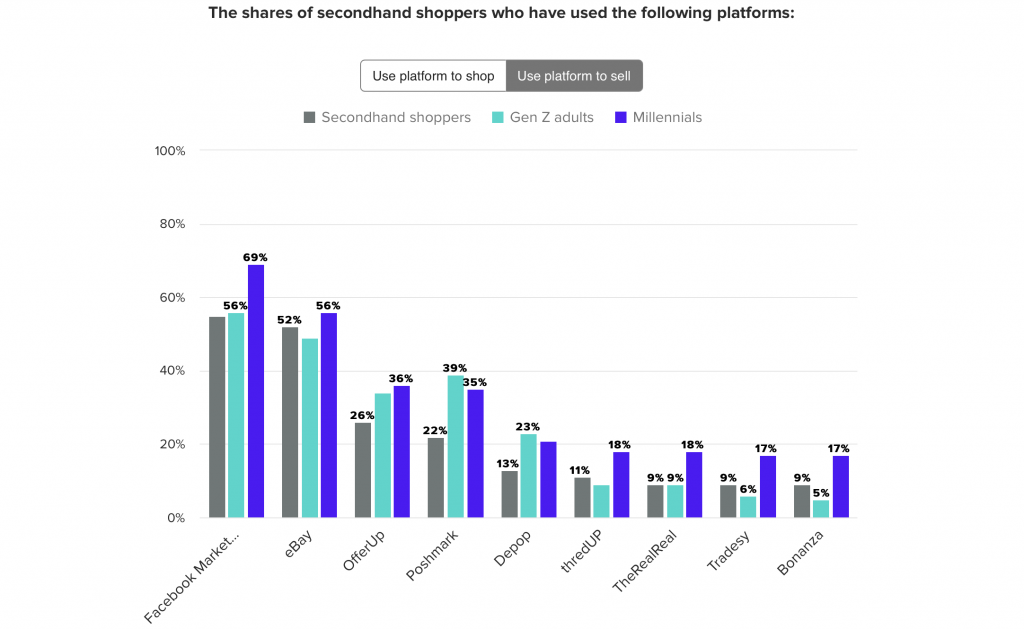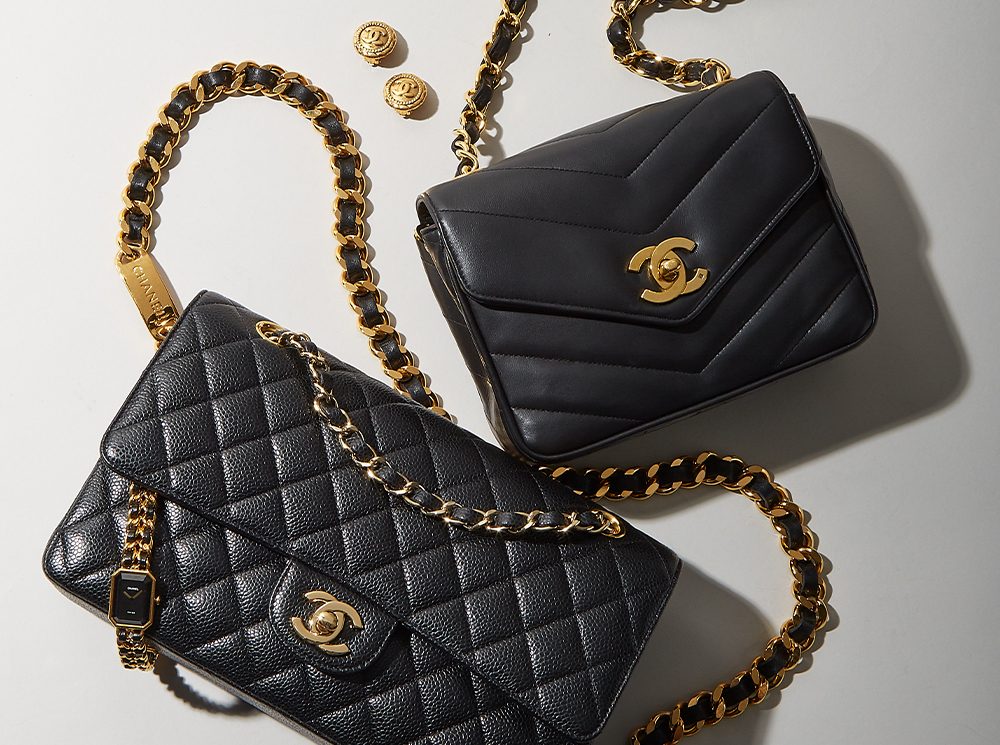A new survey reveals that the robust resale market is still growing, with consumers saying that they expect their purchases of pre-owned goods to increase in 2023. According to new findings from Morning Consult, which surveyed 2,210 adults in the U.S. in October in order to gauge the state of the resale market, almost two-thirds of survey participants (62 percent) said that they have engaged in some sort of “purchase-driven resale shopping behavior” – either shopping for or buying pre-owned products – in the past 12 months. At the same time, more than one-third of those consumers (37 percent) said that they expect their purchases of secondhand goods to increase over the next year, adding further fuel to the burgeoning resale market.
Secondary market consumption is spread across demographics, Morning Consult found, but Gen Z and millennial consumers were, nonetheless, among the primary users of resale platforms at a “much higher rate” than others, which “highlights younger cohorts’ importance to the future of the resale economy.” And while eBay Inc. and Meta’s Facebook Marketplace were “the most-used sites for both buying and selling across demographics” among the survey participants as a whole, Morning Consult states that millennials are “significantly more active” on other sites, such as TheRealReal, thredUP, and Bonanza, than older demographics and Gen Z. At the same time, Morning Consult maintains that “there are some signs that younger-skewing platforms” like Poshmark are “making dents in the established order.”
In terms of the types of goods that consumers are mostly likely to purchase from the resale-market, 62 percent of survey respondents said clothing, putting apparel behind books/games (74 percent), tools (69 percent), and cars (65 percent), but before furniture/home decor (59 percent) and other categories of goods.
The Buyer, Seller Balance
The other critical element in the resale equation is, of course, sellers. Compared to active secondary market buyers, the scenario becomes more complicated when it comes to consumers that are looking to offer up pre-owned products for sale. “The future selling behavior of secondhand shoppers (i.e., respondents who indicated that they have shopped for or bought secondhand items within the past year) is more unclear relative to buying,” per Morning Consult, which states that nearly 1 in 5 (19 percent) survey participants reported they “do not know or have no opinion” about whether/how their selling habits will change over the next 12 months. Earlier research from Morning Consult revealed that in the 3 months leading up to April 2022, 44 percent of U.S. adults had purchased a secondhand item while 24 percent had sold one.

Market volatility and inflationary pressures, which have prompted consumers to seek out lower prices, paired with rising sustainability concerns, are drawing an increasing number of consumers into the resale market. In fact, according to the Luxury Resale Report that The RealReal released in August, its consumer base grew by 23 percent in the first half of the year, enabling it to add 5.3 million new shoppers to its base since 2021. And at the same time, customers are bought more: buyers snapped by 44 percent more items from The RealReal year-over-year, as awareness of the resale market, in general, continues to grow.
Attracting sellers is proving to be more difficult and most cost-intensive for companies, such as The RealReal, for instance, which has reported sizable net losses, due at least in part to consignor-acquisition efforts – from extensive advertising to expanding its brick-and-mortar network with the aim of getting consignors into stores.
The glaring imbalance between secondary market buyers and sellers is significant, as the resale platform model relies on supply from consumers – and in some cases, companies – to drive revenue and their bottom lines. “Volume growth is essential for second-hand clothing companies to turn in steady profits in an industry notorious for tight margins and inconsistent inventory,” according to analysts, and thus, the more buyers-than-sellers conundrum is likely driving some of the consolidation that is playing out in the secondary space. (You can find a timeline of secondary market M&A here.)
THE BOTTOM LINE: The evolving secondary market is seeing reselling platforms, a growing number of brands, and Amazon (which recently partnered with reseller What Goes Around Comes Around), alike, “clamoring to capture their stake of the industry’s nearly $180 billion projected market value in 2022,” according to Morning Consult. But in addition to fighting to compete from a market dominance perspective, companies in this space are also vying for the much-needed stock from secondary sellers.











